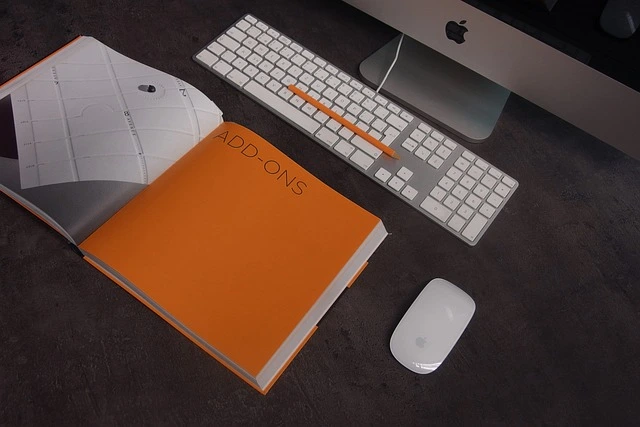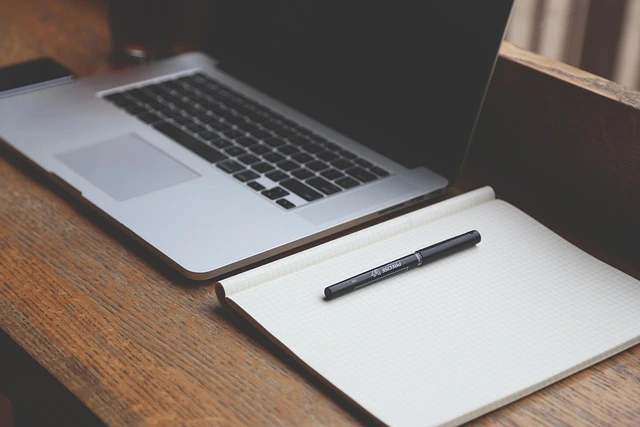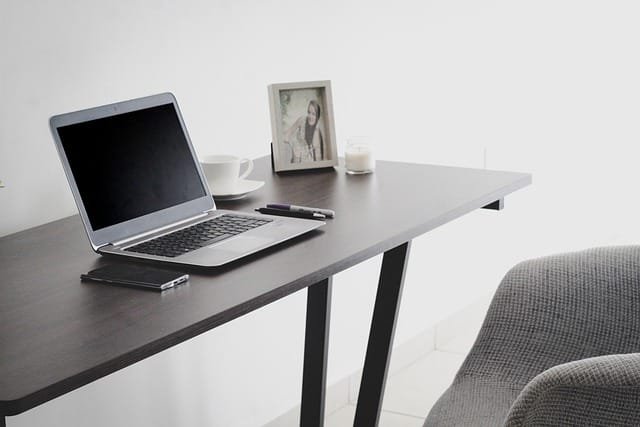Designing the best home office setup in 2025 isn’t just about comfort — it’s about creating a workspace that actively boosts your productivity, protects your health, and supports the demands of modern hybrid work.
In this comprehensive guide, we’ll walk through the essential components of the best home office setup: from ergonomic desks and chairs to productivity-enhancing monitors, laptops, and smart accessories. Whether you’re remote full-time, freelancing, or balancing hybrid work, this is your complete blueprint for getting more done, stress-free.
1. The Foundation: Choosing the Right Desk
Start with space. Your desk anchors everything else. For most users, an adjustable standing desk is ideal. It encourages movement, reduces back strain, and adapts to different tasks. It’s a cornerstone of the best home office setup.
Top Picks: Office Desks Under £500: Best Ergonomic Picks for 2025
Look for:
- Electric height adjustment (dual motor preferred)
- At least 120cm width for multiple monitors
- Built-in cable management or grommets
- Rounded edges and a stable frame
A well-chosen desk can dramatically influence your comfort, workflow, and posture throughout the day. It should support not just your tech — but the way you work.
Don’t forget desk material either: solid wood or bamboo options add durability and aesthetic appeal to your space. And if you’re short on space, wall-mounted or L-shaped designs can maximise functionality.
Even better? Some standing desks come with memory presets, so with a tap, you can switch between sitting and standing without adjusting height manually. Pair it with an anti-fatigue mat and your feet will thank you by 3pm.
2. Sit Smarter: Ergonomic Chair Essentials
A good chair prevents burnout — literally. Long sessions at a poor chair will destroy your posture, energy, and focus. Look for full lumbar support, seat depth adjustment, and breathable mesh. A quality chair is non-negotiable in the best home office setup.
Related: Best Ergonomic Chairs to Perfect Your Home Office Setup
Checklist:
- Adjustable lumbar support
- Tilt tension and locking system
- 3D or 4D armrests
- Mesh back for airflow
- Waterfall seat edge for circulation
A top-tier chair like the Herman Miller Aeron or Steelcase Leap may seem pricey but will last for years and pay off in comfort and productivity. Sitting shouldn’t be painful — and with the right setup, it won’t be.
Even mid-range chairs from brands like SIHOO or FlexiSpot offer great value if you select models with ergonomic certifications and adjustable features.
Remember: if your chair doesn’t move with you, it’s working against you. Your body shifts constantly — your seat should, too.
3. See Clearly: Monitor Setup for Focus and Speed
A single laptop screen won’t cut it for most professionals. A dual-monitor or ultrawide setup drastically improves task flow, focus, and multitasking. For the best home office setup, proper screen real estate is essential.
Check Out: Top 5 Ultra-Wide Monitors for Better Multitasking
Tips:
- Use a monitor arm to reclaim desk space
- Calibrate brightness and colour temperature
- Match screen size and resolution to your tasks
Position your primary monitor directly in front of you at eye level to avoid neck strain. A secondary monitor can be angled slightly for reference material or open communications.
If you’re working with spreadsheets, coding, or media editing, an ultrawide monitor can eliminate the need to constantly switch windows. Even gamers have adopted these setups for immersion — imagine what they can do for your workflow.
4. Power Up: Best Laptops for Remote Work in 2025
If you’re relying on a dated laptop, you’re likely slowing yourself down. For the best home office setup, your laptop needs to keep up with modern workflows.
Look for:
- At least 16GB RAM and SSD storage
- Long battery life (10+ hrs)
- AI Copilot or productivity software integration
Review Roundup: 5 Best Laptops With AI-Powered Copilot You Can Buy in 2025
A fast, reliable laptop is at the heart of your digital toolkit. Whether you’re video calling, editing documents, or running cloud apps, speed = focus.
Don’t overlook ports. HDMI, USB-C, Thunderbolt, and SD slots can make all the difference when you’re juggling devices and external displays.
Devices like the MacBook Pro M3, Dell XPS 15, and Lenovo ThinkPad X1 Carbon offer workstation-class performance with portability.
Pro tip: pair your laptop with a docking station for effortless transitions between mobile and desktop setups.
5. Don’t Forget the Small Stuff: Smart Accessories
These tools might seem minor, but they have a huge impact on flow:
- Noise-cancelling headphones
- External webcam and microphone
- Wireless keyboard and ergonomic mouse
- USB hubs and cable tidies
- Laptop stand and desk mat
Don’t Miss: 10 Must-Have Accessories for Your Home Office Setup
When you eliminate friction, you eliminate distraction. Accessories are often what separate a basic workspace from the best home office setup.
A well-placed whiteboard, a reliable printer, and even a footrest can subtly but powerfully improve your day-to-day efficiency. Streamlining these details prevents minor annoyances from breaking your focus.
Quality accessories reduce cognitive fatigue — no fiddling, no troubleshooting — just plug in and get to work.

6. Lighting, Decor & Atmosphere
Natural lighting boosts mood and focus. If you’re short on windows, opt for LED daylight lamps. Your environment affects how long and how well you can work.
Add:
- A clean, clutter-free desk
- Motivating wall art or plants
- A dedicated workspace away from your bed or sofa
- Acoustic panels or rugs to reduce echo
Style Tip: The Best Office Décor Ideas for Boosting Productivity
You can even explore circadian lighting setups that shift tone and intensity throughout the day to match your energy levels.
Colour temperature matters too — 4000K–5000K light mimics daylight and is best for concentration. Warm lighting (2700K) is better for breaks or evening wind-down.
7. Cable Management & Desk Organisation
Clutter kills productivity. A messy desk leads to scattered thoughts and frequent distractions. Organising cables and tools is essential if you want the best home office setup to stay clean and functional.
Pro Tips:
- Use cable trays or under-desk cable nets
- Label cables at both ends
- Bundle extras with Velcro ties
- Route cables along desk legs with adhesive clips
- Invest in a wireless charging station to reduce clutter
A tidy desk improves focus by reducing visual noise. You’re less likely to get sidetracked when everything has its place. This is especially true when switching between tasks. If your workspace can’t adapt on the fly, neither can you.
Drawer organisers, pen trays, and filing solutions may seem minor — but these are the little hacks that keep your flow uninterrupted all day.
8. Internet Reliability & Power Backups
Your productivity is only as stable as your Wi-Fi signal. For remote workers, freelancers, and hybrid professionals, a rock-solid connection is non-negotiable.
Must-Haves:
- Mesh Wi-Fi system for large homes
- Ethernet backup (wired connection) for stability
- Surge protectors with USB ports
- Uninterruptible power supply (UPS) for battery backup
Don’t let a network hiccup or power outage ruin your workday. Mesh routers like Google Nest or TP-Link Deco ensure even coverage across floors and thick walls.
A backup power supply can save your progress (and your sanity) during brief blackouts. Investing in this infrastructure puts your home office on par with a real one — if not better.
9. Soundproofing & Acoustics
A great home office isn’t just about what you see — it’s about what you don’t hear.
Improve Acoustics With:
- Acoustic foam panels or tiles
- Rugs and curtains to dampen echo
- Bookcases or wall-mounted storage to absorb noise
- Sealing gaps in doors or windows
Noise is one of the most overlooked productivity killers. Whether it’s traffic, housemates, or kids, background noise fragments your attention. That’s why the best home office setup also accounts for soundproofing.
Even soft background music through noise-cancelling headphones can help create a consistent mental environment.
10. Creating Zones for Breaks & Focus
Productivity isn’t about working non-stop — it’s about managing your energy. Create zones that support different work modes:
- Focus Zone: Your main desk with minimal distractions
- Breakout Zone: A corner with a comfy chair or cushion for breaks
- Call Zone: A specific setup (camera, mic, light) for meetings
- Inspiration Zone: Whiteboard, books, or creative supplies
By setting boundaries inside your space, you tell your brain what mode it’s in. This makes transitioning between tasks smoother and prevents burnout.
The best home office setup doesn’t just help you work harder — it helps you recover smarter.

11. Smart Office Tech & Automation
Make your office work for you. Automation isn’t just a trend — it’s a game-changer for managing your routine, lighting, temperature, and even your to-do list.
Smart Tools Worth Adding:
- Voice-controlled assistants (Google Home, Alexa)
- Smart plugs or lightbulbs (control via app)
- Automated blinds or standing desk timers
- Smart thermostats
Imagine saying “Start Work” and your space lights up, your focus playlist starts, and your desk rises to standing height. You’re not wasting time setting up — your office anticipates your needs.
Automation helps you build consistent routines. Over time, those habits build productivity without you even thinking about it.
12. Health Integration: Move, Hydrate, Breathe
The best home office setup supports your body as well as your brain.
- Schedule 5-minute stretch breaks every hour
- Use water bottles with trackers to stay hydrated
- Consider a mini treadmill or under-desk cycle
- Add a breathing exercise app or posture reminder
Working from home can easily make you sedentary. But your body isn’t designed to sit still for eight hours straight. Building micro-movements into your day boosts circulation and energy.
Standing desks help, but so does actively shifting positions, drinking water, and walking around during calls. Track your steps — make it a game.
13. Personalisation & Mental Space
This is your office. Make it reflect who you are.
Add:
- Framed photos or quotes
- Mood lighting
- A scent diffuser with productivity-boosting oils (peppermint, citrus)
- Plants like pothos or snake plants (low maintenance, air-purifying)
A personalised workspace reduces stress, improves mood, and reminds you that you’re in control of your environment. That sense of ownership leads to deeper focus and longer stretches of high-performance work.
Just make sure your decorations don’t create visual clutter. Think intentional, not random.
14. Budgeting Your Home Office Setup
Not everyone has thousands to spend on their home workspace — and you don’t need to. A great home office setup in 2025 can be built in phases, and budget-friendly alternatives still offer impressive quality.
Phase 1: Essentials (Under £300)
- Budget adjustable desk (£120–£160)
- Mid-range ergonomic chair (£100)
- Basic monitor or laptop stand (£25)
- Desk lamp and accessories (£20–£30)
This covers your posture and layout, which are the most important productivity factors to start with.
Phase 2: Upgrades (Additional £300–£500)
- High-res monitor or ultrawide display
- Second monitor and arm
- External webcam, mic, and lighting for video calls
- Noise-cancelling headphones
You’ll feel the difference immediately when scaling up your toolkit.
Phase 3: Premium Finishing Touches (£500+)
- Standing desk with memory presets
- Branded ergonomic chair (e.g., Herman Miller)
- Smart home accessories or circadian lighting
- Acoustic treatment and backup Wi-Fi/power
The best home office setups grow over time. Treat it like any investment — one that directly improves how you earn, create, and perform every day.

Final Thoughts: Building the Best Home Office Setup in 2025
A well-designed home office isn’t a luxury anymore — it’s a necessity. Whether you’re working from a corner in a flat or have an entire room to yourself, what matters is how intentional your setup is.
A powerful home office setup reflects your values, routines, and ambitions. It’s not just about where you work — it’s about how well you work there. When your environment is optimised, you reduce stress, limit distractions, and make space for meaningful, focused effort. That kind of setup pays for itself in output, motivation, and mental clarity. It creates a daily environment where deep work becomes natural and sustainable — not something you fight for.
When every item in your space contributes to your workflow, your energy, and your wellbeing — you’re not just working, you’re thriving.
From your desk and chair to your lighting, acoustics, and tech — optimise every touchpoint. With the tools and tips in this guide, your 2025 home office won’t just support productivity… it’ll unlock it.
So ask yourself: does your workspace serve you — or is it just somewhere you sit?
Now’s the time to take control.




